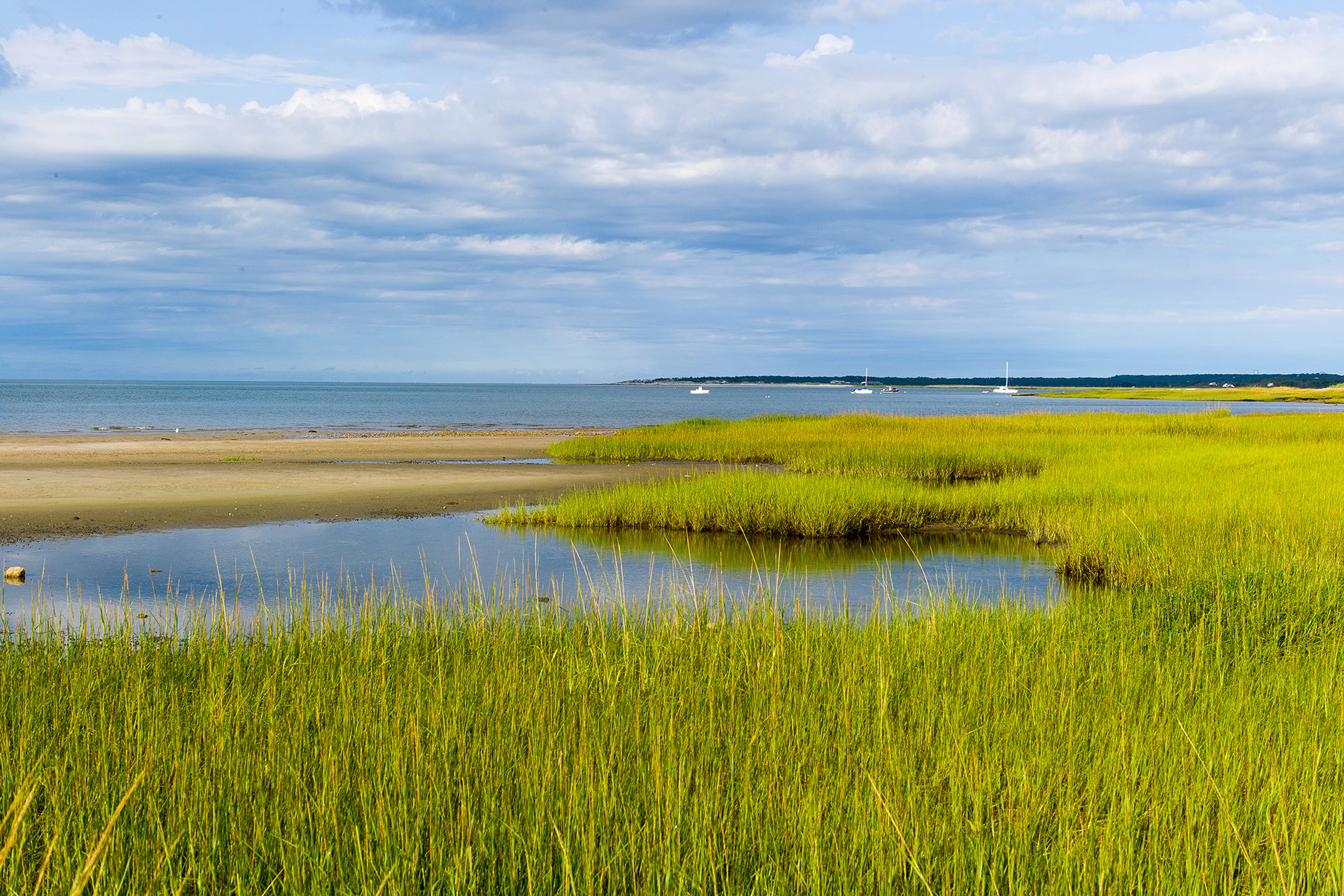Conservation Projects at Long Pasture
Living Lab Wetland Project on Cape Cod
The goal of Long Pasture Wildlife Sanctuary’s Living Lab Wetland Project is to collaborate with students and teachers to design and build naturally appearing and functioning wetlands on school grounds for education and conservation.
Long Pasture provides concurrent and ongoing training and educational programming to many of these students including hands-on activities and in-class lessons focused on science, technology, engineering, and mathematics (STEM).
The addition of a Living Lab wetland on school campuses provides students with unparalleled learning opportunities to investigate rare wetland dependent flora, fauna, and soils, and contribute to the ongoing work in wetland restoration ecology and ecological engineering.
Why Create Wetlands at Schools
Wetlands are considered to be the most biologically diverse of all ecosystems. And 43% of all species listed as threatened or endangered in the United States by the U.S. Fish and Wildlife Service depend on wetlands for their survival.
Experts report that less than one-half of the wetlands in the contiguous 48 United States remain. Over 28% of the wetlands in Massachusetts were lost to drainage from the 1780's to 1980's.
By bringing the "lab" to the school through wetland creation, we make outdoor learning accessible, and more feasible than bussing to off campus study sites.
Public school campuses were often created on or adjacent to what were once considered "valueless wetlands," and it is not difficult to find appropriate open space to restore wetlands at schools.
Teacher-Student Collaboration
The project partnership involves both teachers and students in the step-by-step process of planning, creating, and then studying the wetland on school grounds.
By actively participating in the creation of a wetland, students will gain a sense of investment and ownership in the project and receive valuable practical experience in real life ecological engineering. Ecological engineering is the design of sustainable ecosystems that integrate human society with its natural environment for the benefit of both.
Once created, the Living Lab wetland will serve as an ongoing study site. The interactive, experiential learning opportunities can reinforce in-class learning of core science, technology, engineering, and math concepts that are embedded into federal and state learning standards.
Mass Audubon Cape Cod teacher naturalists offer place-based learning approaches to schools, integrating the Next Generation Science Standards (NGSS) and MA Science, Technology, and Engineering Standards. These standards promote real world science learning by complementing core concepts about how the world works with active investigations to increase and provide a context for understanding.
Environmental Benefits
Schools can expect the creation of a Living Lab on their property to provide the following environmental benefits:
- Restoring less productive land to a more productive state as a functioning vernal pool
- Increasing biodiversity (amphibian, avian, invertebrate, and more)
- Providing habitat for target species (spotted salamander, wood frog, bats)
- Resiliency by cleaning run-off, reducing flooding, and recharging groundwater
- Establish a living classroom for education and basis for citizen science
Bring a Living Lab to Your School
Mass Audubon Cape Cod invites schools to participate in our Living Lab Wetland Project by building a wetland on their campus! The creation takes one day to complete and requires the use of an excavator.
Creation of a Living Lab Wetland on Campus
Students and teachers would participate in the design and construction of the wetland, utilizing science engineering and math STEM components. Prior to the creation of the wetland, students would be introduced to the project and wetland ecology through an in school presentation provided by Mass Audubon.
By creating a Living Lab, students will:
- Determine soil texture using a soil auger and the ribbon test
- Determine elevation of groundwater using a soil auger
- Measuring slope using a laser level and a clinometer
- Measuring distance using a range finder and an imperial and metric tape measure
- Using laser level to record elevations
- Learning how to mark circles, ovals, rectangles, and irregular shapes on the ground using survey equipment
- Identification and control of nonnative invasive plants
- Planting and seeding of native plants for pollinators
- Use Best Management Practices to control soil erosion
- Loosening compacted soils for plant growth and water percolation using shovels and rakes
- Learning when soil compaction is good and when it is bad
Wildlife and Water Quality Monitoring
- Amphibian, avian, invertebrate, botanical water quality monitoring for multiple grade levels after the wetlands are built.
- Pitfall trapping, aquatic traps and dip netting for surveying invertebrate and amphibian use of wetlands
- Audio and video monitoring and egg mass surveys to census amphibian reproductive activity
- Wetland plant surveying using quadrats
- Cover-board monitoring in surrounding uplands
- Water monitoring using water testing equipment
- Vernal pool certification
Estimated Cost Per School Wetland
The cost of bringing a wetland to your school runs between $8,000 and $10,000 based on project variables.
Curriculum-based Educational Opportunities (All Grade Levels)
Mass Audubon Cape Cod teacher naturalists offer place-based learning approaches to schools, integrating the Next Generation Science Standards (NGSS) and MA Science, Technology, and Engineering Standards.
For more information on the Living Lab Wetland Project, please contact by email or call 508-362-7475 x9350



